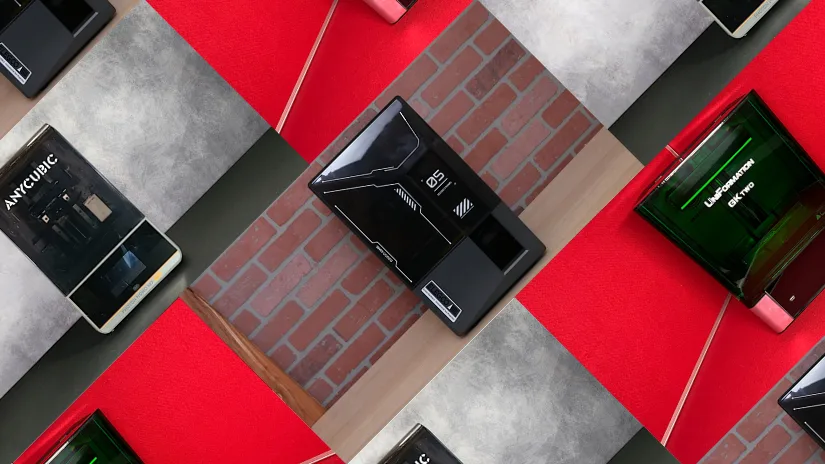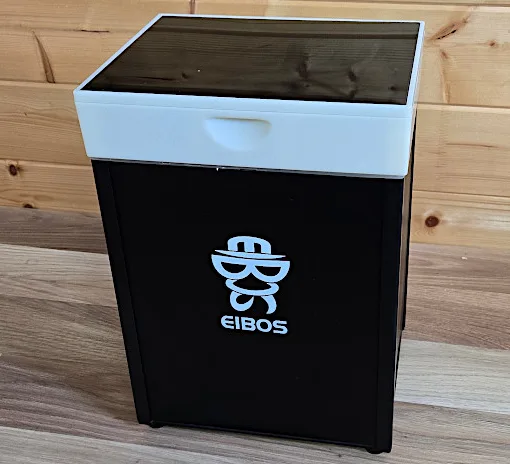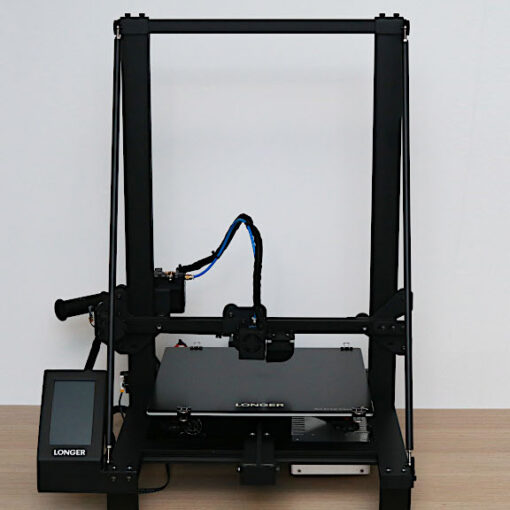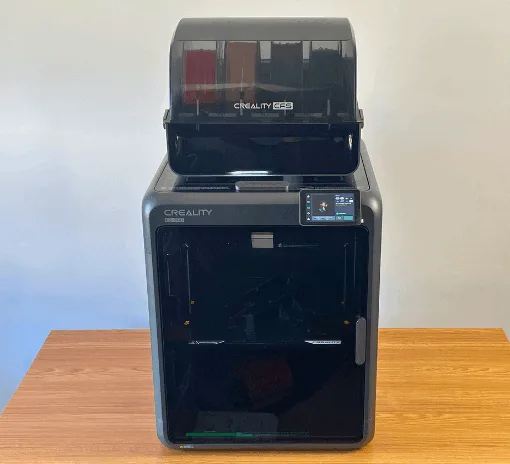After testing and reviewing a wide range of resin 3D printers over the years, we are compiling this detailed guide to the best budget resin 3D printers across several categories. In response to growing demand from hobbyists, designers, and professionals, this technology continues to evolve, offering higher resolutions, smarter features, and faster workflows. In this guide, we highlight accessible and reliable machines, compare their performance and specifications, and highlight innovative features.
Table of Contents (Jump to a Section)
- Resin 3D Printing – How Does It Work
- Prices Explained
- Small Volume Budget 3D Printers in the $300 Price Range
- Medium Volume Budget 3D Printers in the $600 Price Range
- Large Volume Budget 3D Printers in the $1000 Price Range
- Innovations
- General Uses
- What to Consider
Resin 3D Printers – Brief History
Resin-based 3D printing has roots going back to the 1970s, with the Stereolithography (SLA) process patented in the mid-1980s, making it one of the earliest 3D printing technologies. Known for its high precision and smooth surface finish, SLA became a mainstay in industrial prototyping and continues to be widely used today. With the rise of the open-source movement and growing interest in FDM printers during the 2010s, resin printing also gained momentum, becoming more affordable and accessible to hobbyists, makers, and small businesses.
Resin 3D Printing – How Does It Work?
Resin 3D printing works by curing liquid photopolymer resin layer by layer using a focused light source, typically UV. Unlike FDM printing, which extrudes melted plastic through a nozzle, resin printers use either a laser (SLA), projector (DLP), or masked LCD screen to solidify each layer with high precision. This process allows for finer details, smoother surfaces, and is especially well-suited for miniatures, dental models, and other high-detail applications. However, it often requires more post-processing and safety precautions due to resin handling.
Resin 3D Printing Timelapse
©3DWithUs – MP4: Will Zoobkoff
Prices Explained
Resin 3D printers now span a wide price range, from entry-level models under $200 to professional machines costing several thousand. Most consumer-grade printers fall between $200 and $800, offering impressive resolution, touchscreen controls, and decent build volumes. What drives price differences? Key factors include resolution (2K to 16K), build quality, speed, advanced features like resin auto-refill or AI monitoring, and the reliability of customer support.
While high resolution once came at a premium, it’s now common across even budget machines thanks to intense competition. Still, premium brands like Formlabs, maintain higher price tags by offering robust ecosystems, and long-term service.
The Best Small Volume Budget 3D Printers in the $300 Price Range
These are the most popular resin 3D printers, mostly because they come with a very affordable price tag. During sales or other campaigns, machines in this category, even from popular brands, can be found for as low as $150, while clearances can push the price to below $100 in some cases.
Elegoo Mars 5 Ultra 9K
Price: $269-$338
Resolution: 9K
Build Volume: 153.36×77.76x165mm/6.04”x3.06”x6.5”


Compare the Prices & Bundles:
Amazon | Official Website
Attractive price tags and a large user community brought Elegoo Mars series printers into the league of the top bestselling machines for a few consecutive years.
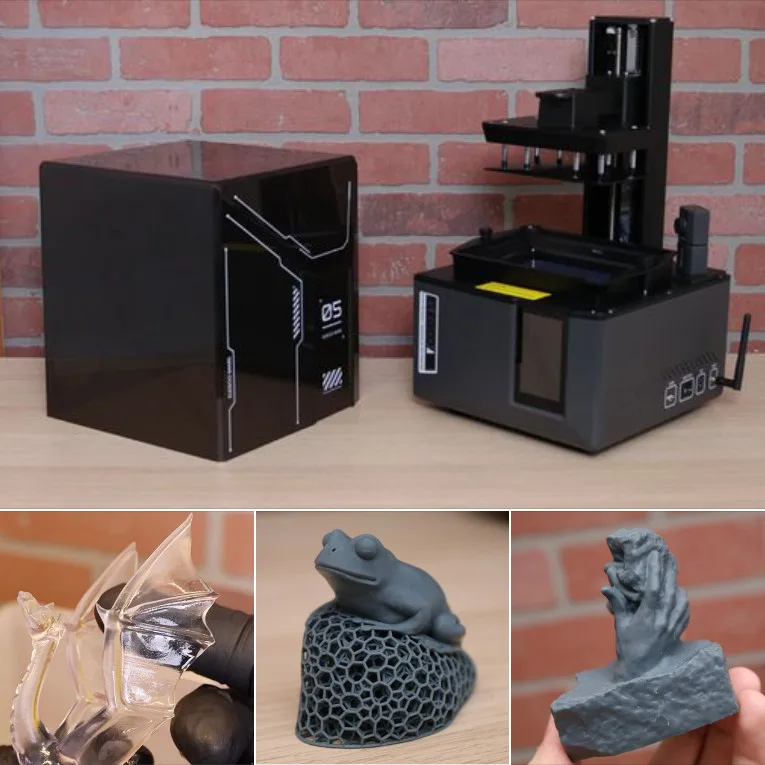
©3DWithUs – Photo: Andrew Sink
Andrew Sink printed various models using his Elegoo Mars 5 Ultra. He showcased his original design, a 3D scan from the Rodin sculpture, a dragon model by Loubie3D and other models. Read the review article, complete with many images of the prints.
The Elegoo Mars 5 Ultra has a list of features that would have seemed like a moonshot wish list only a few years ago, yet it remains affordable and accessible to beginners. Automatic build platform calibration, resin level detection, integrated print monitoring via webcam, 18 micron XY pixel size, and other features all give the Mars 5 Ultra a competitive edge over the competition. The sub-$300 price point makes this an easy purchase to justify for beginners and power users alike, and the performance of the Mars 5 Ultra puts it at the top of the list of the best desktop resin 3D printers.
Read more – unboxing, testing and project examples:
Elegoo Mars 5 Ultra Review by Andrew Sink
Elegoo Mars 3 Pro Review by Andrew Sink
Anycubic Photon Mono 4
Price: $219-299
Resolution: 10K
Build Volume: 153.4mm*87mm*165mm
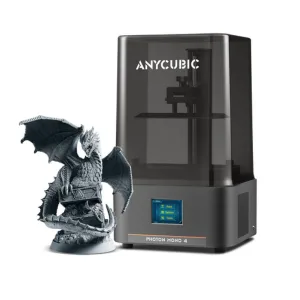
Compare the Prices & Bundles:
Amazon | AliExpress | Official Website
Anycubic is another brand that has a very strong community, especially on Facebook. Photon Mono 4 is just one of the options from a wide range of machines in the Photon series.
We haven’t evaluated the Photon Mono 4 just yet. Here are the testing results of the previous Photon series machine in this volume and price range.
Read more – unboxing, testing and project examples:
Anycubic Photon M3 Review by Will Zoobkoff.
The Best Medium Volume Budget 3D Printers in the $600 Price Range
Sometimes with twice the bigger build volume compared to the small-sized printers featured above, these machines are more for professionals who print items in bulk or enthusiasts who decide to give highly detailed miniatures and fan art a larger scale.
Piocreat HALOT-X1
Where to Buy
Price: $579 – $749.00 USD
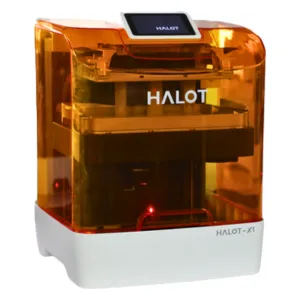

Compare the Prices & Bundles:
Official Store
The PioCreat HALOT-X1 is a high-resolution consumer resin 3D printer featuring a true 16K mono LCD (15,120 × 6,230 pixels) and an innovative motion system that moves the vat and light engine instead of the build plate, eliminating manual leveling and reducing vibration. Designed for creators who demand detail—like miniature painters and product designers—it also supports an optional auto-feed unit (AFU) for hands-free resin refills. Built by PioCreat, a Creality Group subsidiary with deep R&D roots, the HALOT-X1 reflects the company’s broader mission to deliver advanced, accessible tools for professionals and hobbyists alike.

©3DWithUs – Photo: Will Zoobkoff
If you value sharp, repeatable results with minimal fuss, the Halot X1’s moving resin vat + solid-mount bed architecture and intelligent light system make it a standout choice for miniature painters, prop makers, and small studios. With excellent detail, simple setup, and smart resin handling, it feels less like spec-sheet theater and more like a practical step toward hassle-free, high-detail resin printing.
Read more – unboxing, testing and project examples:
PioCreat HALOT-X1 Review by Will Zoobkoff.
Elegoo Saturn 4 and Saturn 4 Ultra
Elegoo Saturn 4
Price: $319
Resolution: 12K
Build Volume: 218 x 122 x 220mm / 8.58” x 4.80” x 8.66”
Product links:
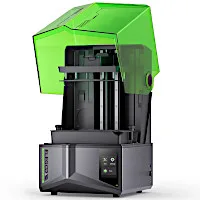
Elegoo Saturn 4 Ultra
Price: $449-561
Resolution: 12K
Build Volume: 218 x 122 x 220mm / 8.58” x 4.80” x 8.66”
Product links:
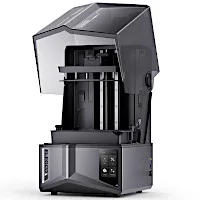
This year, Elegoo again launched two Saturns: the basic Saturn 4 and the premium Saturn 4 Ultra. A lot of sophisticated features were added, surprisingly, to both machines, such as auto-leveling and a user-friendly flip-back cover design. Even though the Ultra version has significantly more features for a higher price, the basic Saturn 4 appeared to have everything to complete the tasks with great results.
Quick Comparison Saturn 4 with Saturn 4 Ultra:
No Tilt Release Technology – that allows printing faster.
No Built-in Camera for Monitoring, Error Detection, and Timelapse videos.
No Wi-Fi Connectivity.
No Extra Anti-drip Tray.
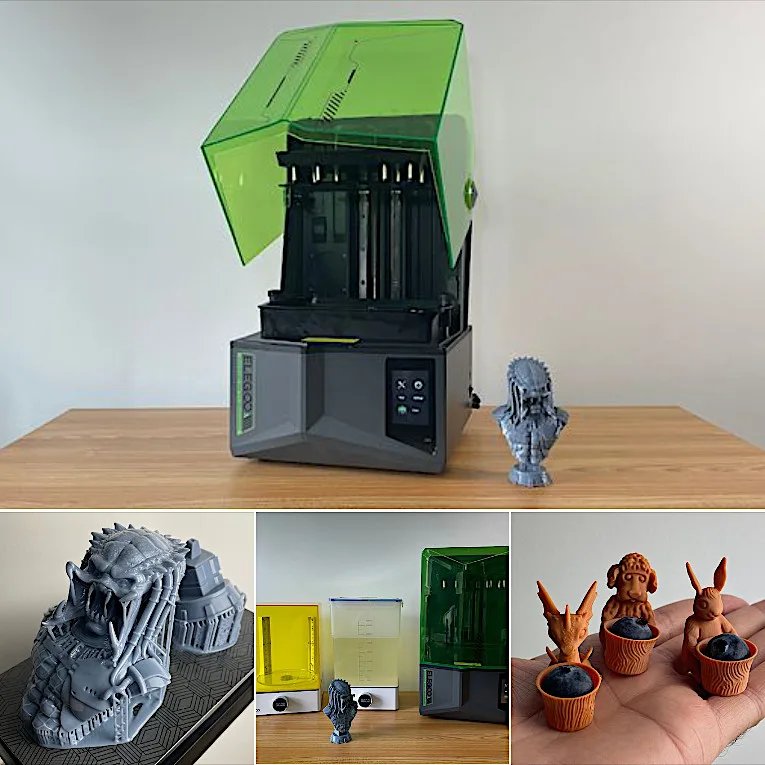
©3DWithUs – Photo: Max Funkner
I was fortunate enough to review three Elegoo Saturns in a row, and if Saturn 2 and Saturn 3 didn’t have a lot of difference between them apart from higher resolution, then Saturn 4 differs in many ways. Now, Saturn 4 received an automatic leveling, a different printing bed and attachment system, and a user-friendly protective cover design. And these are still basic features for the basic version to maintain a very competitive price.

©3DWithUs – Prints and Photo: Phil Macey
The Elegoo Saturn Ultra 16K has been exceptional to test and use for printing. The machine’s construction is top-notch, retaining the flip-lid design of the 12k Ultra while boosting the resolution to 16K. A major upgrade is the heated resin VAT. During tests, local outside temperatures plunged below zero. In an unheated workshop, such conditions would typically halt printing. However, the heated VAT performed exceptionally, maintaining a steady temperature of about 25°C. It utilizes the build plate to agitate the resin, moving up and down to distribute heat evenly.
Read more:
Elegoo Saturn 4 Review by Max Funkner
Elegoo Saturn 4 Ultra 16K Review by Phil Macey
Nova3D Whale4
Price: $499 – $669
Product links:
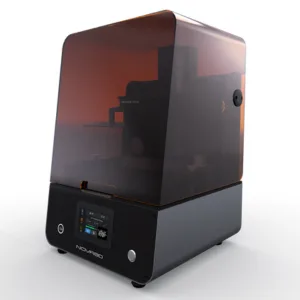
As the product is new, it is not available on Amazon or AliExpress shelves just yet, but it may appear soon. Here is their shop on Amazon.
The Nova3D Whale4 Ultra is upgraded from its prequel, enjoying a lineup of impressive updates on both its feature set and handling. With its stunning 16K screen, upgraded UV light system with more rapid curing, and convenient features in the design of its resident resin warmer and air filtration system, this 3D printer guarantees accuracy and ease of use.
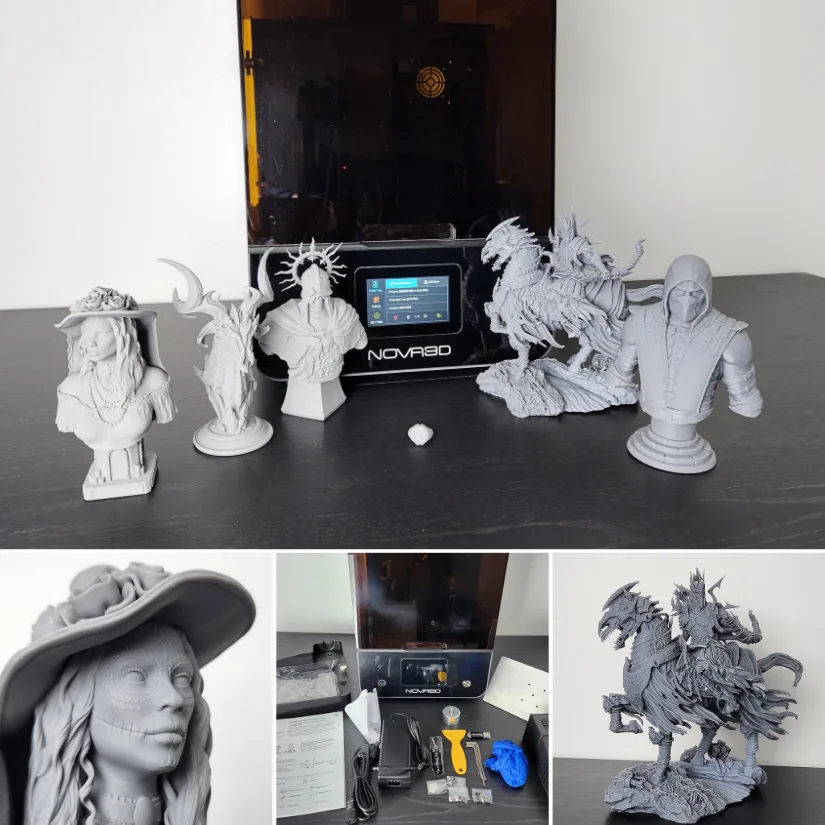
In our rigorous testing, the Whale4 Ultra continuously delivered sharp, quality prints whether it was printing with the SUNLU 14K resin or with the Standard resin offered by Nova3D, which showed its capabilities in high-resolution display and advanced features.
Read more – unboxing, testing and project examples:
Nova3D Whale4 Review by Will Zoobkoff.
ANYCUBIC Photon Mono M5s
Price: $519-719
Resolution: 12K
Build Volume: 8.58 x 4.84 x 7.87in / 218 x 123 x 200mm
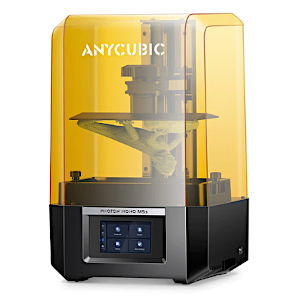
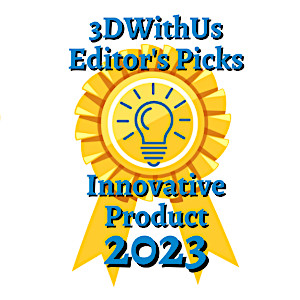
The Anycubic Photon Mono M5s is the latest installment in the popular Photon Mono line of resin 3D printers from Anycubic. This line primarily brings resin 3D printers to beginners and new users at a reasonable price point.
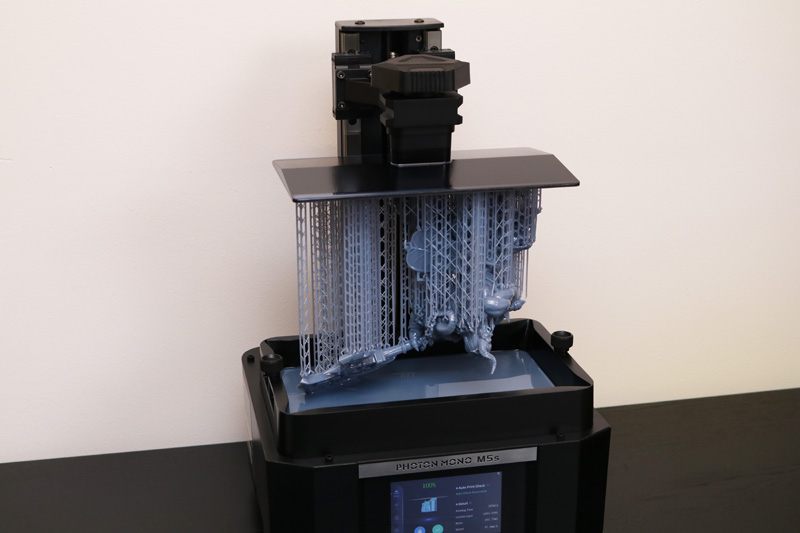
©3DWithUs – Photo: Andrew Sink
The Photon Mono M5s has a list of new hardware features that is guaranteed to impress even experienced 3D printer users, and features quality-of-life features designed to help beginners. Between the 12K resolution, the new automatic build platform leveling process, and the 3rd generation release film on the vat, the $539 Photon Mono M5s boasts across-the-board upgrades without the corresponding jump in price. Check the print quality and read the full review by Andrew Sink.
Anycubic Photon Mono M7 Pro
Price: $499 – $669
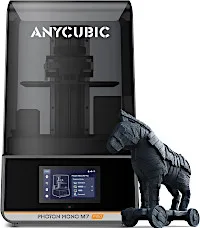
Amazon
AliExpress
Official Website
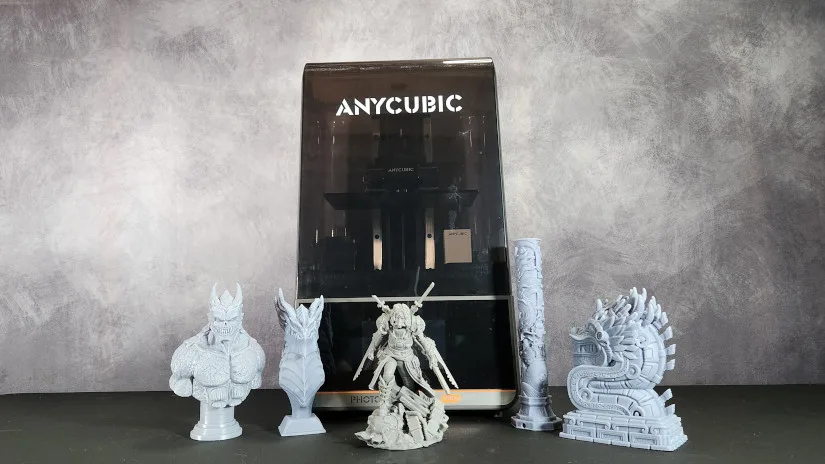
©3DWithUs – Photo: Will Zoobkoff
The Anycubic Photon line has evolved, culminating with the most recent model, the Photon Mono M7 Pro. Building on the highly renowned Photon Mono M5s Pro, the M7 Pro has a higher resolution of 16.8 x 24.8 microns and the same automated self-check technology. It also adds an integrated vat heating system and the option of using the Anycubic air filtration system or the new auto-fill and recycling system. Check the print quality and read the Anycubic Photon Mono M7 Pro Review by Will Zoobkoff.
The Best Large Volume Budget 3D Printers in the $1000 Price Range
What are the biggest build volume resin 3D printers that can be purchased for approximately $1000? Professional-grade 3D printers are obviously used for mass 3D printing or to print extra-large objects. Compare Anycubic Photon M3 Max with Elegoo Jupiter.
Anycubic Photon M7 Max
Price: $799-$899
Resolution: 7K
Build Volume: 10.9×6.11.8in / 298x164x300mm
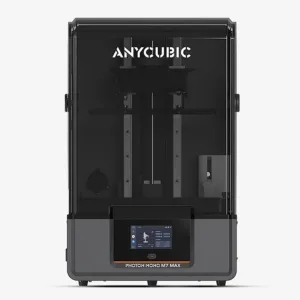
Compared to its predecessor, the Photon M3 Max, the Anycubic Photon M7 Max has a myriad of new features designed to streamline and expedite printing. The new COB light system and Fresnel lens improve light uniformity compared to previous LED panel systems, for a more level exposure on the build plate. The Intelligent Release 2.0 system with pressure sensors dynamically switches between lift height of a layer, in helping to reduce printing time.
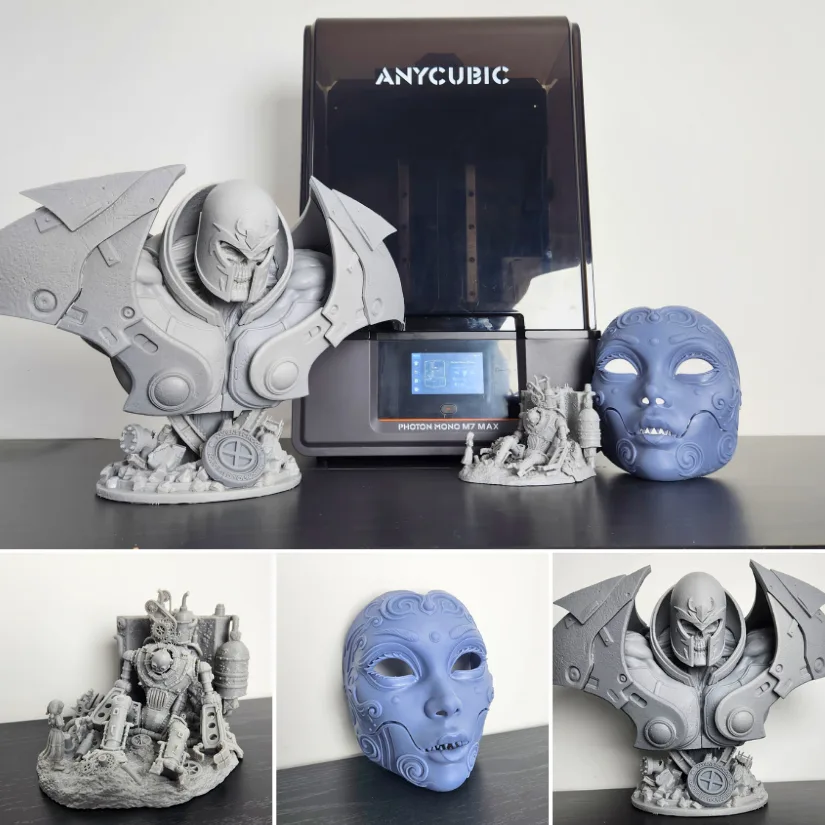
©3DWithUs – Photo: Will Zoobkoff
The Anycubic Photon M7 Max is a resin behemoth printer that excels at large-format printing, batch printing miniatures, and dioramas in less time with fewer build plates. While its screen resolution is slightly lower than that of other current printers, that’s hardly noticeable given the high quality of print it achieves. From wearable masks and intricate dioramas to gigantic busts, the Photon M7 Max printed each test perfectly, demonstrating its versatility and reliability.
Read more – unboxing, testing and project examples:
Anycubic Photon M7 Max Review by Will Zoobkoff.
Anycubic Photon M3 Max Review by Will Zoobkoff.
Elegoo Jupiter
Price: $940-1,200
Resolution: 6K
Build Volume: 10.9×6.11.8in / 277x156x300mm
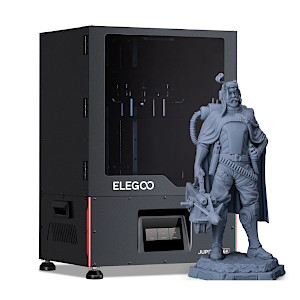
With a strong community across the globe, it was not a surprise that this Kickstarter campaign accumulated $4.7mln with over 5,000 backers. To have a feel how big this machine is please check the image below where Elegoo Jupiter placed next to Mars and Saturn printers.
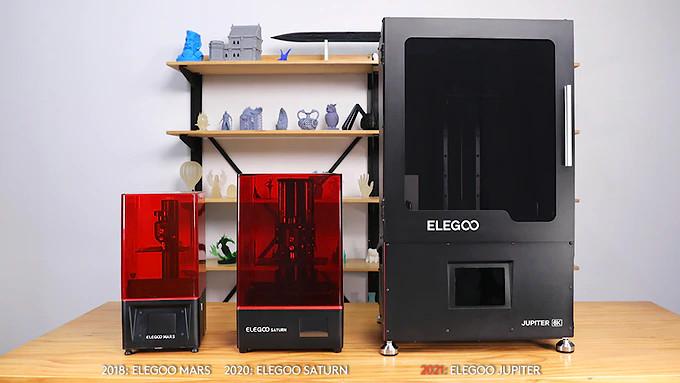
Image: Elegoo
With a strong community across the globe, it was not a surprise that this Kickstarter campaign accumulated $4.7mln with over 5,000 backers. Jupiter offers a large format high-resolution printing experience. Elegoo’s community and supporters actively suggest and comment on various improvements, and Jupiter’s design was tweaked during the campaign. As a result, an Ethernet port has been added together with a few other adjustments. The Super Early Birds were lucky to secure this machine for a special price of only $600.
Innovations Around Resin 3D Printers
SLA in 3D printing used to be associated with the slow printing process which may be hazardous in the home environment. During the past few years, we have been witnessing a big number of resin 3d printers launched, the majority were LCD followed by DLP. Among the most common innovations were improved precision, speed, and a larger build volume. Other innovations were in connection to a more silent printing process, purifying systems, and better bed adhesion. All these contributed to resin 3D printers becoming a common choice for hobbyists.
Auto Leveling System
Leveling the build platform can be a daunting task for beginners, as the platform must be perfectly planar with the LCD screen and resin vat film in order to get a consistent offset at all points. Typically, resin printers like the Anycubic Photon M3 Plus or the Elegoo Mars 3 Pro use a multi-bolt leveling system to set the position of the platform, which can be a tedious and difficult task. If the build platform isn’t leveled, parts will have difficulty adhering, be dimensionally inaccurate, or potentially cause damage to the delicate LCD screen.
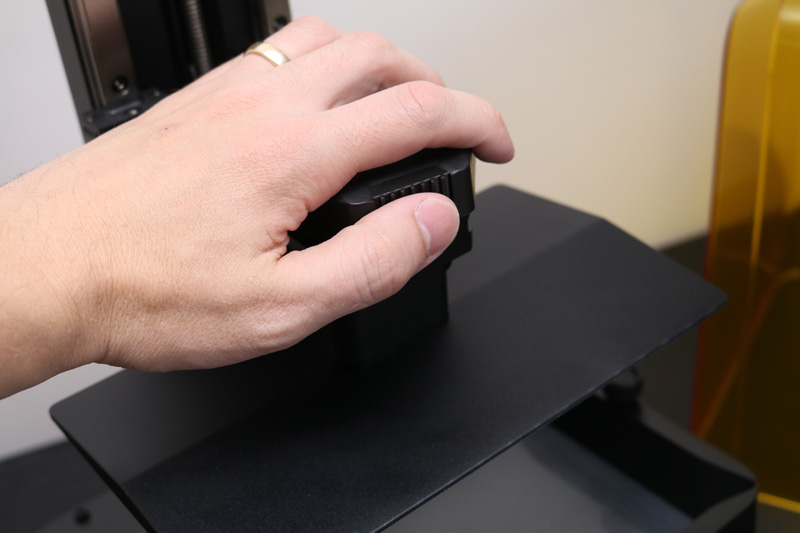
©3DWithUs – Photo: Andrew Sink
Anycubic has addressed this by adding a mechanical sensor to the cantilevered arm of the Photon Mono M5s which is able to detect when the platform is level automatically when a print starts. Read Photon Mono M5s review by Andrew Sink.
A Quick-release Vat System
One of the standout features of the GK TWO printer is its unique resin vat docking system. As someone who has worked with different printers in the past, I can confidently say that using the GK TWO was much more efficient and streamlined. Instead of fumbling with bolts on either side of the vat, simply slid it into place and it locked securely into position. Read Uniformation GKtwo review by Richard Hirst
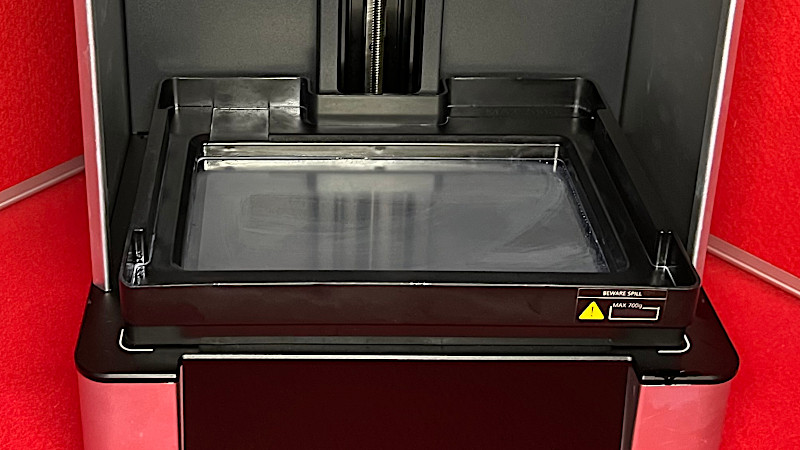
©3DWithUs – Photo: Richard Hirst
We are delighted to see that such enhanced features, usually seen on professional resin 3D printers, are getting implemented on budget 3D resin printers as well.
Tilting Vat System
Notable feature of the Mars 5 Ultra is the tilting vat, which separates the part from the release film instead of simply raising the platform. This is the same process used on the Prusa SL1S, and is primarily intended to increase the overall print speed without risking the part delaminating from the platform.
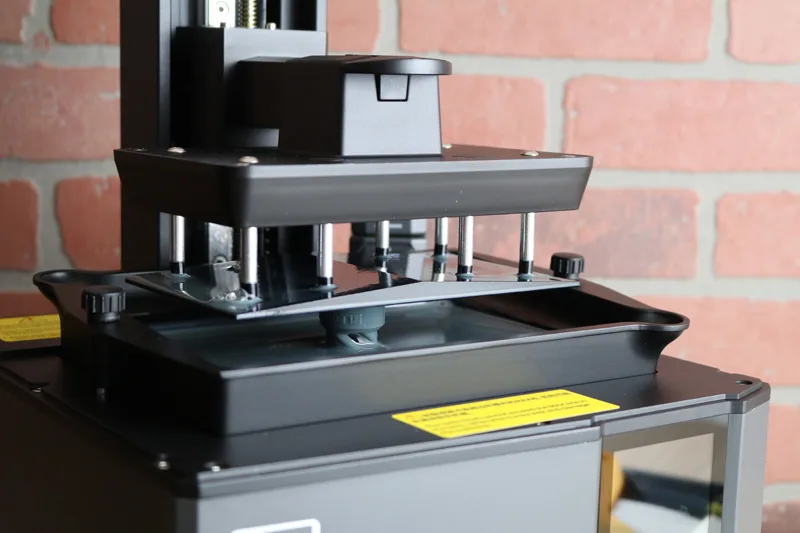
©3DWithUs – Photo: Andrew Sink
Instead of lifting the platform, the Elegoo Mars 5 Ultra tilts the resin vat after each layer. Read full Elegoo Mars 5 Ultra Review by Andrew Sink
DCLF 3D Printer – HITRY Rocket 1
Rocket 1 by HITRY benefits from a new DCLF, Digital Continuous Liquid Forming, technology for printing in resin and promises a higher speed and better quality using a new type of resin. Let’s take a look at the Rocket 1 campaign, check specifications and take the first glance at this novel technology.
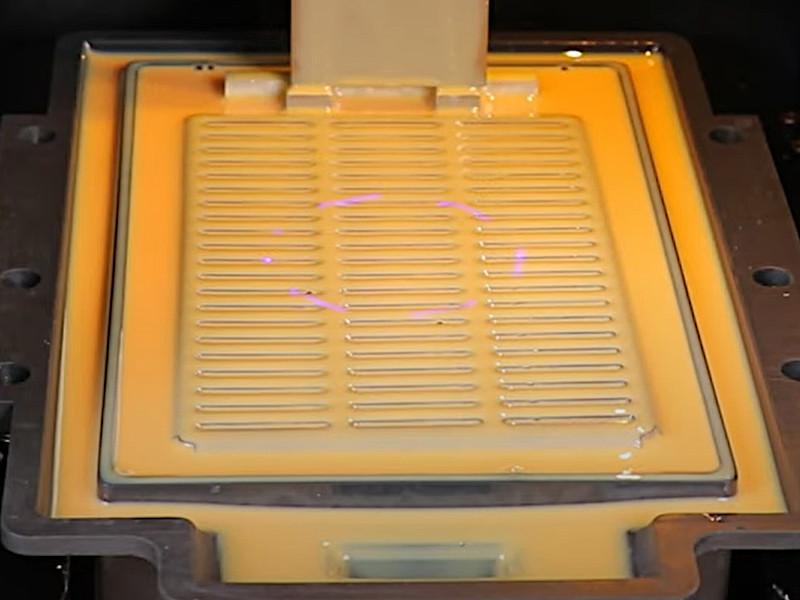
(Image: HITRY)
Resin Pump System
While the automatic pump works well, the amount of tubes, wires, and probes make this system look a little less professional, and a little more like a science project. In addition, the black tube which delivers the resin will need to be flushed whenever resin is changed to fully change colors and to prevent it from potentially hardening and blocking the stream. Read more in Anycubic Photon M3 Plus review by Andrew Sink.
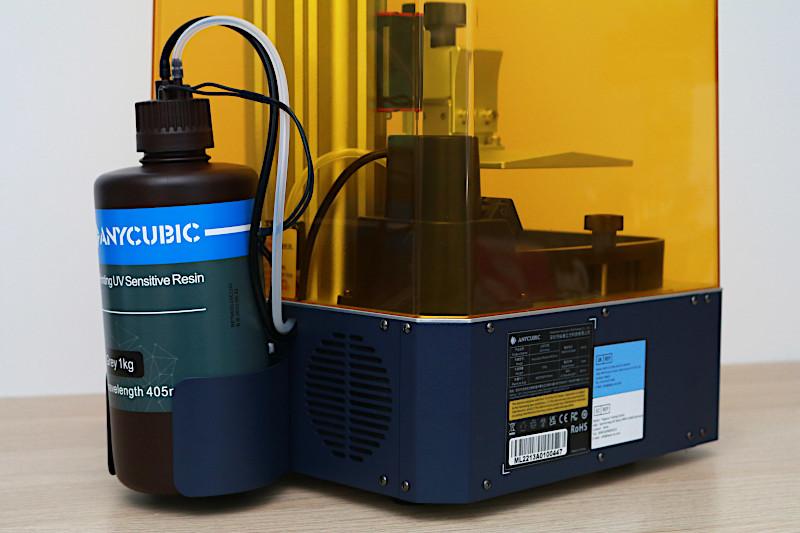
© 3DWithUs – Photo: Andrew Sink
Uses of Resin 3D Printers
The original SLA machines have been primarily used for prototyping. The main purpose of such machines is to help designers to test and feel the future product in a prototype mode. Nowadays prototyping is widely used in the automotive industry, medicine, for surgery planning, architecture, and other areas. SLA, LCD, and DLP resin 3D printers are gaining ground in dentistry, audiology, and jewelry.
From the hobbyist perspective, this technology is invaluable for creating complex figurines and miniatures that can be used in tabletop gaming. With the ability to print in great detail, designers can let their imagination run free.
What to Consider
With all the benefits that this technology brings, it may be tempting to try it out at home. There are a few aspects to consider.
– Health and Safety. Dealing with resins may be a messy job, and as this material is hazardous, strict safety measures have to be put in place. Wearing gloves and protective goggles is one. Designating the work area which is well ventilated and out of children’s reach is another.
– Post-processing. Prints made in resin require washing and curing, and this leads to buying an extra item – a Wash & Cure machine.
– Part replacement. LCD monitor lasts for 2-3 years on average, so be prepared for replacing it, which may result in an extra $200-500, depending on the brand.
Read more: Best Wash and Cure Stations
Post-processing is a big part of 3D printing in resin, and additional equipment, like wash and UV cure stations, is needed. In recent years, these two separate units started coming as two-in-one stations. Similar to 3D printers, washing and curing stations … Read more …

